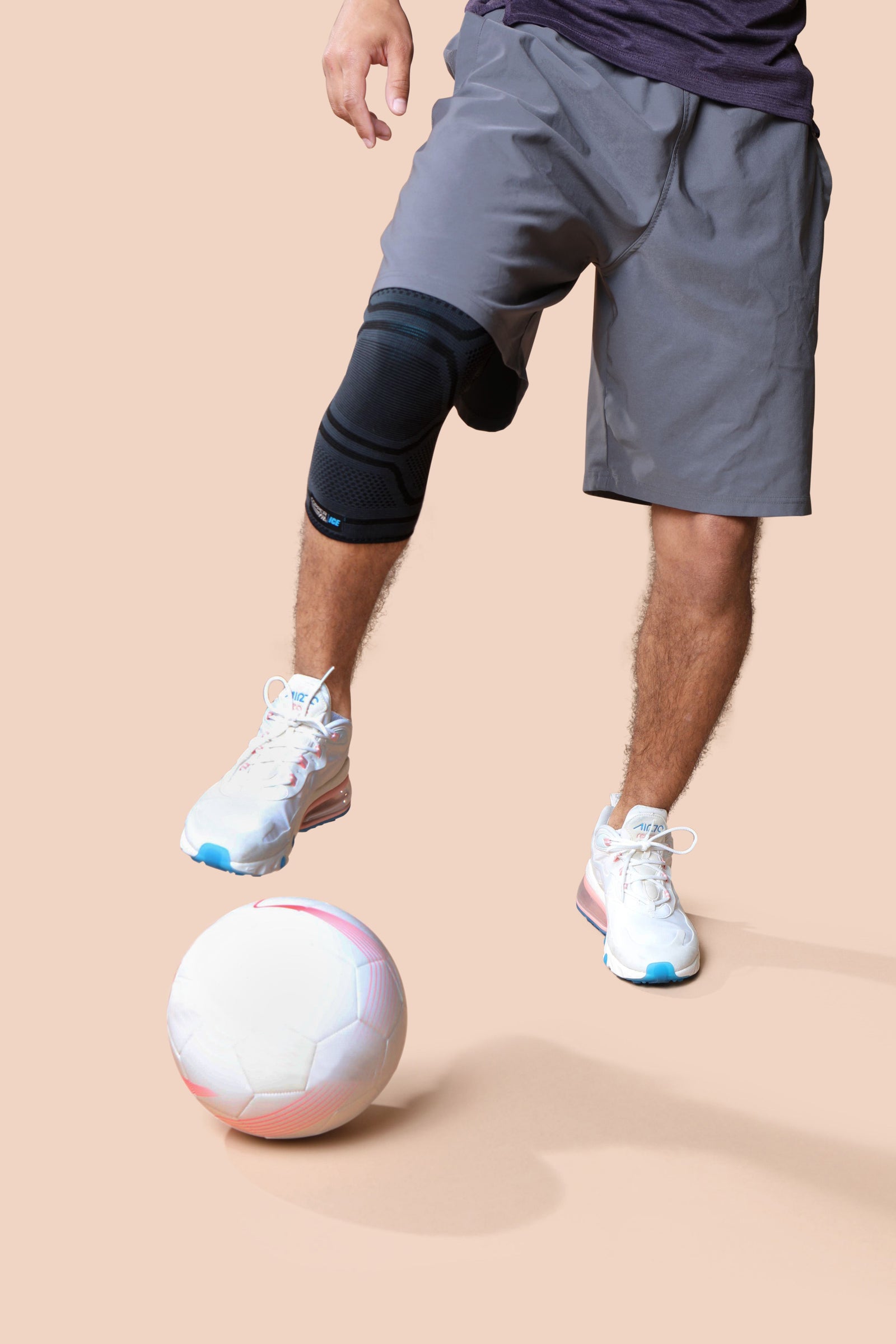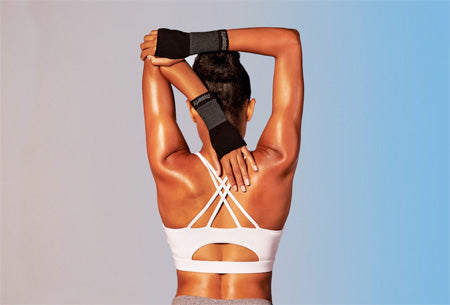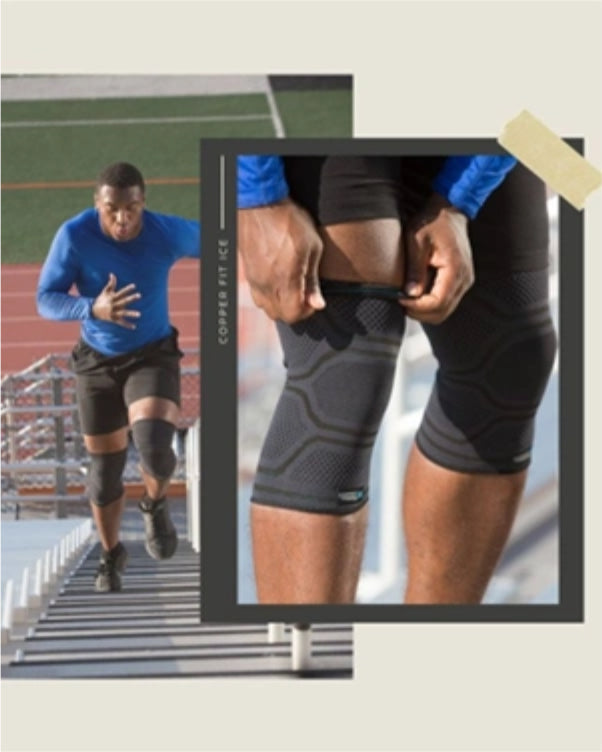
Key Takeaways:
- Lymphedema causes a range of uncomfortable sensations. People with lymphedema may experience dull aches, heaviness, tight skin, or even sharp pain, all of which can affect movement and sleep quality.
- Daily life can be significantly impacted. Swelling and discomfort can make everyday tasks, physical activity, and rest difficult, reducing overall quality of life.
- A personalized, multi-strategy approach can help manage symptoms. Treatment often includes physical therapy, massage, lymphatic drainage, gentle exercise, a healthy diet, and medical options tailored to each individual’s needs.
Lymphedema, a chronic condition characterized by swelling in the body's tissues, can significantly impact an individual's quality of life. Understanding the nature of lymphedema pain and exploring strategies to manage it is crucial for those affected.
This article explores how to manage lymphedema pain and move forward in comfort.
What Is Lymphedema?
Lymphedema is a long-term condition that occurs when the body's lymphatic system doesn't function correctly, leading to the accumulation of lymph fluid in the body's tissues, causing swelling, most commonly in the arms or legs. The lymphatic system, a vital part of our immune system, helps fight infection and drain excess fluid from tissues.
Primary Lymphedema
Primary lymphedema is a form of the condition that is usually a result of genetic conditions that affect the development of the lymphatic system. These genetic conditions cause abnormalities in the way the lymphatic system forms, leading to a malfunction.
This type of lymphedema can manifest at different stages in life, from birth to later adulthood, depending on the specific genetic condition. Despite being less common, understanding primary lymphedema is essential for early detection and management.
Secondary Lymphedema
Secondary lymphedema is the more common type and occurs due to damage to the lymphatic system or blockages within the lymphatic vessels. This damage can be a result of various factors, including surgery, cancer treatments like radiation, infection, or injury.
For instance, surgical procedures that require the removal of lymph nodes can disrupt the normal flow of the lymphatic fluid, leading to secondary lymphedema. Similarly, radiation therapy can cause inflammation and scarring, which can obstruct the lymphatic vessels. Understanding the causes of secondary lymphedema can help in prevention and timely treatment.
Common symptoms of lymphedema include persistent swelling in the arms, legs, or other parts of the body, a feeling of heaviness or tightness in the affected area, restricted range of motion, discomfort or aching, and recurring infections.
The severity and impact of these symptoms can vary widely between individuals, and the condition can significantly affect daily life, making tasks that were once simple more challenging.
What Does Lymphedema Pain Feel Like?
The pain or discomfort associated with lymphedema can vary significantly from person to person, depending on individual factors and the severity of the condition. It's essential to understand that everyone's experience with lymphedema pain is unique.
Here are some common descriptions of how lymphedema pain may feel:
- Dull Ache or Heaviness: Some people may experience a dull ache or heaviness in the affected area. This sensation can make it difficult to move the limb freely and can be particularly noticeable after periods of physical activity or at the end of the day.
- Fullness or Pressure: A common description of lymphedema pain is a feeling of fullness or pressure in the affected limb. This sensation is often accompanied by a feeling of heaviness, further hindering the free movement of the limb.
- Tightness and Hardening of the Skin: The skin over the swollen area can become tight and hard, leading to discomfort or aching. This is often worse after periods of inactivity, such as first thing in the morning or after sitting or standing for extended periods.
- Sharp and Intense Pain: In severe cases, the pain can be sharp and intense, similar to the feeling of a muscle cramp or sprain. This can be particularly troublesome when it disrupts sleep or makes it difficult to engage in normal daily activities.
Understanding and acknowledging the nature of lymphedema pain is the first step toward finding effective strategies to manage it and maintain a comfortable and active lifestyle. By recognizing these sensations, you can better communicate your symptoms to healthcare professionals, aiding in your treatment and management plan.
How Does Lymphedema Impact Daily Activities?
The discomfort and swelling associated with lymphedema can significantly impact an individual's daily activities. The persistent swelling can make it difficult to move the affected limb freely, which can affect walking, exercising, carrying items, or even performing simple tasks like buttoning a shirt or writing.
Sleep can also be disrupted due to lymphedema. The discomfort can make it challenging to find a comfortable sleeping position, particularly if the arms or legs are affected. Reduced sleep quality can lead to fatigue and reduced energy levels during the day, further impacting daily activities and overall quality of life.
Managing lymphedema discomfort is therefore crucial for maintaining daily function and a good quality of life. It involves a combination of medical treatment and self-care practices.
What Other Strategies Can Help Manage Lymphedema Pain?
Managing lymphedema pain effectively often requires a multifaceted approach. Here are several strategies that can be used:
Physical Therapy
Working with a physical therapist can provide a customized set of exercises and techniques to manage lymphedema symptoms. These professionals can guide you on improving mobility in the affected limb, strengthening your muscles, and stimulating the flow of lymph fluid.
Regular sessions can lead to significant improvements over time, enhancing your ability to perform daily activities with less discomfort.
Massage
Certain types of massage, specifically manual lymph drainage, can help move lymph fluid out of the affected area. This specialized technique involves gentle, rhythmic movements that can stimulate the lymph vessels and facilitate the drainage of excess fluid, thereby reducing swelling and discomfort.
It's important to have these massages performed by a trained therapist to make sure that the technique is effective and safe.
Lymphatic Drainage Techniques
These self-care techniques, often taught by a physical therapist or lymphedema specialist, can help you manually move lymph fluid toward functioning lymph nodes. Learning these techniques allows you to manage your symptoms at home, providing a practical, everyday strategy for reducing swelling and discomfort.
Regular Exercise
Gentle, regular exercise can help stimulate the flow of lymph fluid, improve mobility, and enhance overall well-being. This can include activities like walking, swimming, or gentle yoga.
It's crucial to start slowly and gradually increase your activity level, always listening to your body's signals. Consulting with a healthcare professional before starting a new exercise regimen is always advisable for safety and effectiveness.
Healthy Diet
A balanced, nutritious diet can support overall health and well-being, which can in turn help manage lymphedema symptoms. Consuming a variety of fruits, vegetables, lean proteins, and whole grains can provide the nutrients your body needs to function optimally.
Staying well-hydrated is also essential, as water plays a crucial role in maintaining the health of your lymphatic system.
Medical Treatment
Depending on the severity of your lymphedema, medical treatments may be necessary. These can include compression bandaging, which involves wrapping the affected limb to encourage lymph fluid to flow out of the area, and pneumatic compression, a therapy that uses a pump to apply pressure to the limb.
Everyone's experience with lymphedema is specific, and what works for one person might not work for another. It's important to work with your healthcare provider to develop a personalized plan that suits your specific needs and circumstances.
By exploring a range of strategies and treatments, you can find the best ways to manage your lymphedema pain and maintain a comfortable and active lifestyle.
FAQs
What does a lymphedema flare-up feel like?
The main symptom of lymphoedema is swelling in all or part of a limb or another part of the body. It can be difficult to fit into clothes, and jewellery and watches can feel tight. At first, the swelling may be soft and easy to push in, leaving a dent, and may come and go.
What can be mistaken for lymphedema?
Lymphedema, a condition caused by a buildup of lymphatic fluid, can be mistaken for other conditions causing swelling, including lipedema, edema, and chronic vein insufficiency. Understanding the differences between these conditions is crucial for accurate diagnosis and treatment.
What is the skin pinch test for lymphedema?
This test will show either a positive or negative sign for lymphedema. To perform, try to pinch and lift a skinfold at the base of the second toe or middle finger. If you can pinch and lift the skin, then the Stemmer's sign is negative. If you are unable to do so, then the sign is positive.
Managing Lymphedema So It Doesn’t Manage You
Managing lymphedema pain is crucial for maintaining a good quality of life. Ignoring this discomfort can lead to a decrease in daily function, disrupted sleep, and reduced energy levels. Paying attention to your symptoms, consulting with healthcare professionals, and incorporating lifestyle shifts can help.
At Copper Fit, we're committed to supporting your comfort and recovery. By focusing on your comfort and well-being, we aim to empower you to stay active and feel your best every day.
Sources:
What is lymphedema? | Harvard Health
Therapeutic massage for pain relief | Harvard Health
Exercise: 7 benefits of regular physical activity | Mayo Clinic





